Dove's Marketing Strategy: Analysis of New Toothpaste Product
VerifiedAdded on 2023/06/15
|11
|1513
|313
Report
AI Summary
This report provides a comprehensive analysis of the marketing principles applied by Dove in introducing its new toothpaste product. It includes a PESTEL analysis to understand the external factors affecting Dove, an Ansoff Matrix to evaluate growth strategies like market penetration and product development, and an explanation of the new product using Tauber’s Brand Extension. The report also covers competitor analysis, focusing on Colgate, and concludes that marketing principles are crucial for successful product launches and market development. Access more solved assignments and study resources on Desklib.
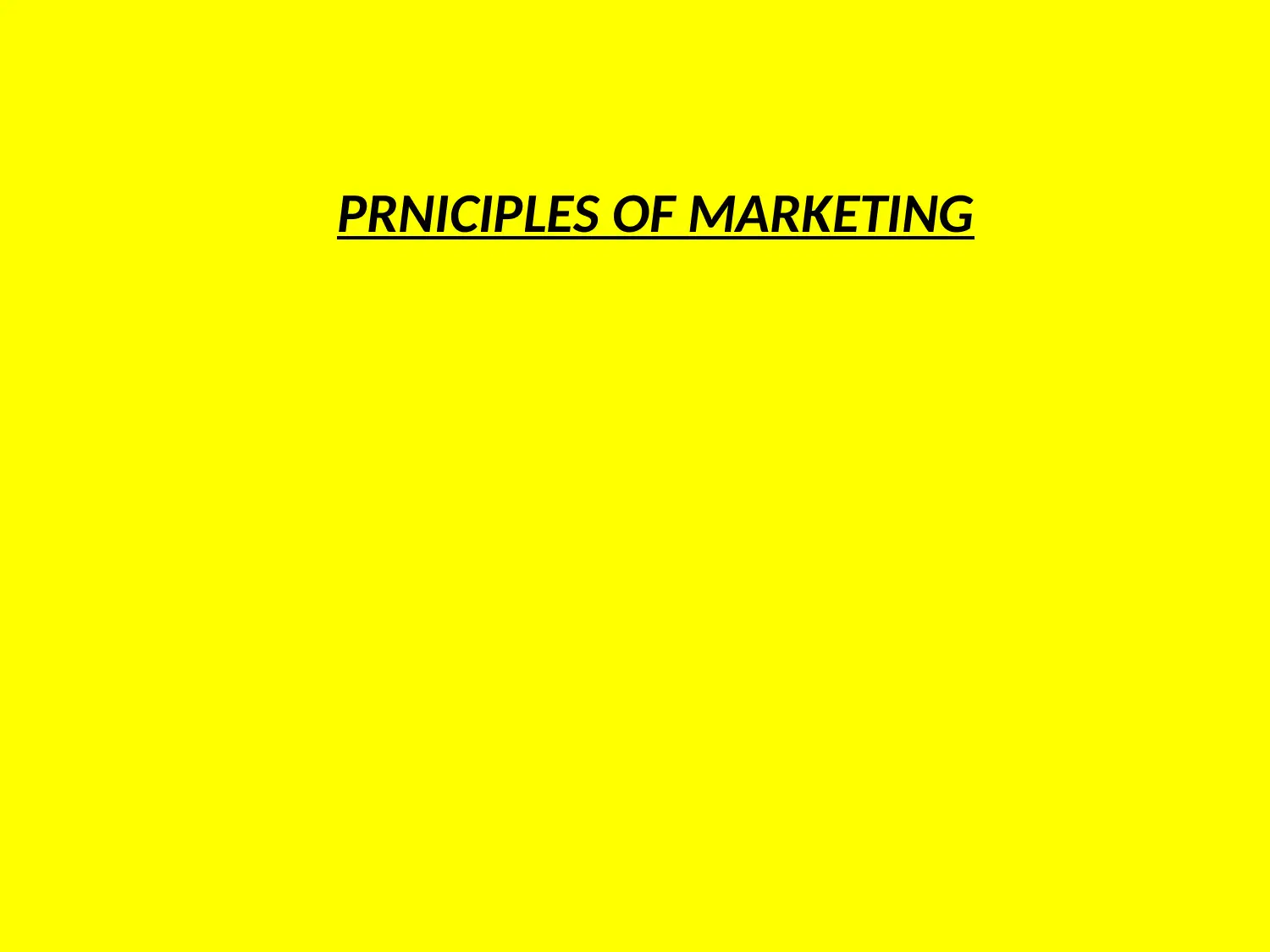
PRNICIPLES OF MARKETING
Paraphrase This Document
Need a fresh take? Get an instant paraphrase of this document with our AI Paraphraser
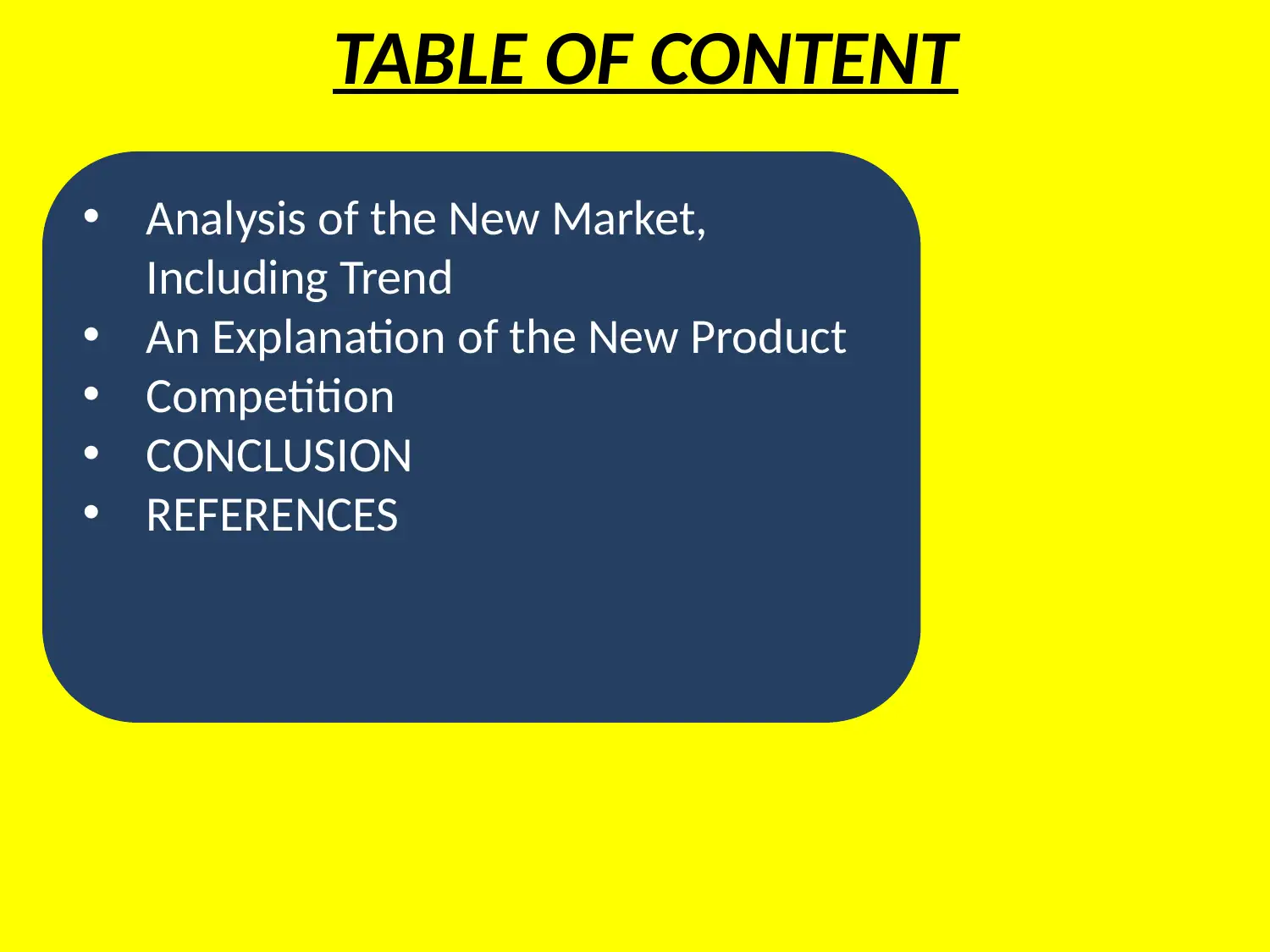
TABLE OF CONTENT
• Analysis of the New Market,
Including Trend
• An Explanation of the New Product
• Competition
• CONCLUSION
• REFERENCES
• Analysis of the New Market,
Including Trend
• An Explanation of the New Product
• Competition
• CONCLUSION
• REFERENCES
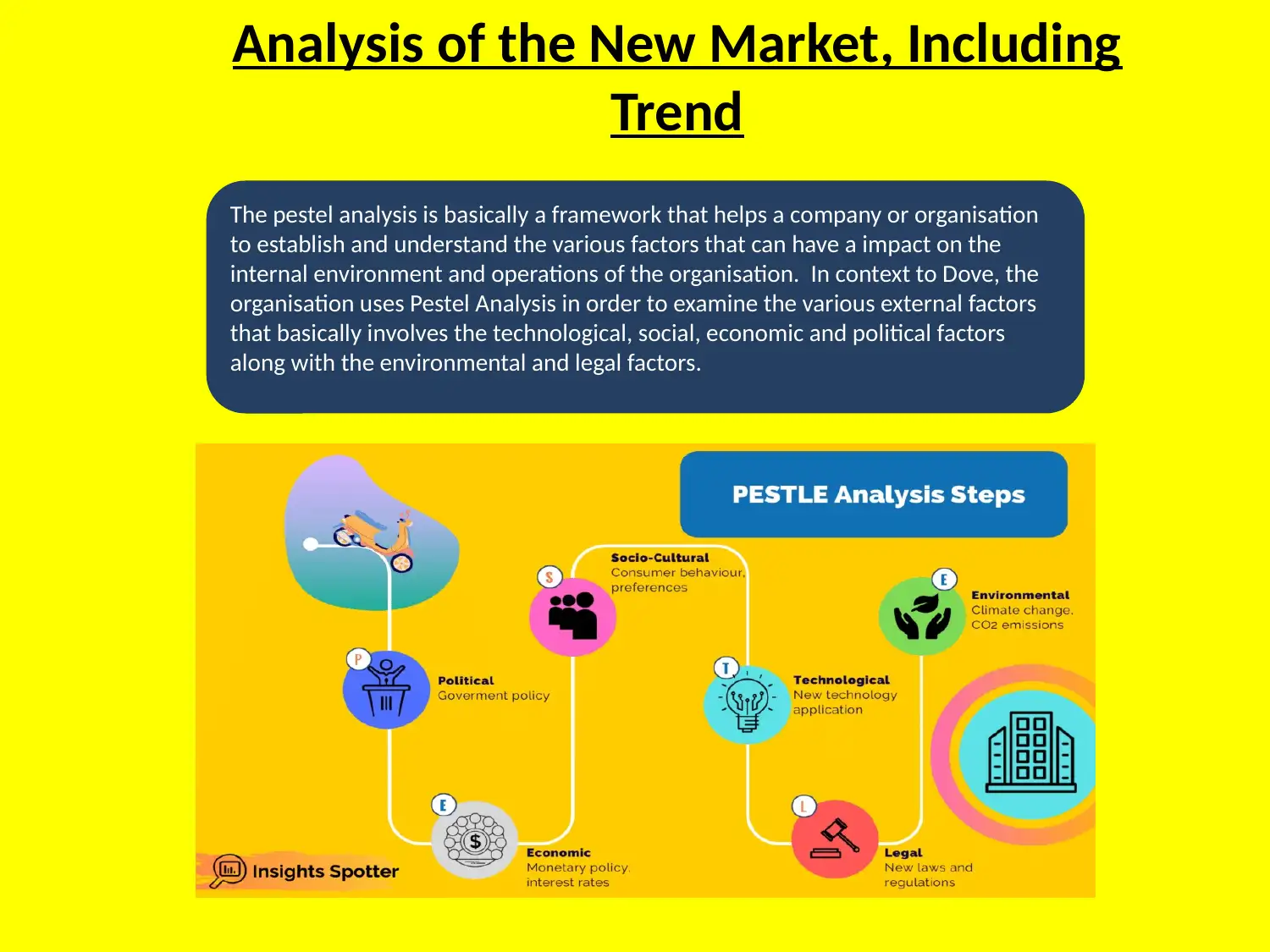
Analysis of the New Market, Including
Trend
The pestel analysis is basically a framework that helps a company or organisation
to establish and understand the various factors that can have a impact on the
internal environment and operations of the organisation. In context to Dove, the
organisation uses Pestel Analysis in order to examine the various external factors
that basically involves the technological, social, economic and political factors
along with the environmental and legal factors.
Trend
The pestel analysis is basically a framework that helps a company or organisation
to establish and understand the various factors that can have a impact on the
internal environment and operations of the organisation. In context to Dove, the
organisation uses Pestel Analysis in order to examine the various external factors
that basically involves the technological, social, economic and political factors
along with the environmental and legal factors.
⊘ This is a preview!⊘
Do you want full access?
Subscribe today to unlock all pages.

Trusted by 1+ million students worldwide
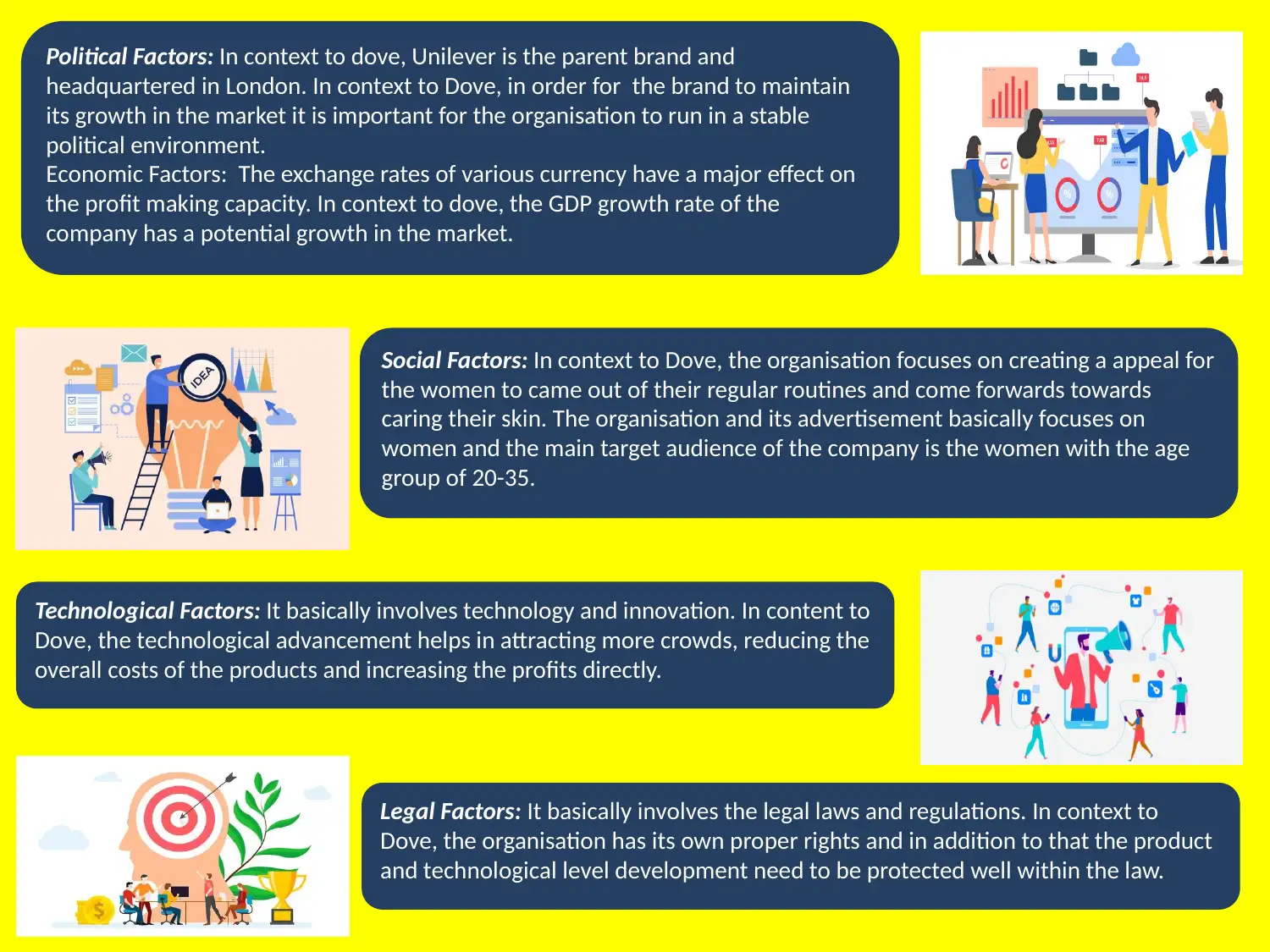
Political Factors: In context to dove, Unilever is the parent brand and
headquartered in London. In context to Dove, in order for the brand to maintain
its growth in the market it is important for the organisation to run in a stable
political environment.
Economic Factors: The exchange rates of various currency have a major effect on
the profit making capacity. In context to dove, the GDP growth rate of the
company has a potential growth in the market.
Social Factors: In context to Dove, the organisation focuses on creating a appeal for
the women to came out of their regular routines and come forwards towards
caring their skin. The organisation and its advertisement basically focuses on
women and the main target audience of the company is the women with the age
group of 20-35.
Technological Factors: It basically involves technology and innovation. In content to
Dove, the technological advancement helps in attracting more crowds, reducing the
overall costs of the products and increasing the profits directly.
Legal Factors: It basically involves the legal laws and regulations. In context to
Dove, the organisation has its own proper rights and in addition to that the product
and technological level development need to be protected well within the law.
headquartered in London. In context to Dove, in order for the brand to maintain
its growth in the market it is important for the organisation to run in a stable
political environment.
Economic Factors: The exchange rates of various currency have a major effect on
the profit making capacity. In context to dove, the GDP growth rate of the
company has a potential growth in the market.
Social Factors: In context to Dove, the organisation focuses on creating a appeal for
the women to came out of their regular routines and come forwards towards
caring their skin. The organisation and its advertisement basically focuses on
women and the main target audience of the company is the women with the age
group of 20-35.
Technological Factors: It basically involves technology and innovation. In content to
Dove, the technological advancement helps in attracting more crowds, reducing the
overall costs of the products and increasing the profits directly.
Legal Factors: It basically involves the legal laws and regulations. In context to
Dove, the organisation has its own proper rights and in addition to that the product
and technological level development need to be protected well within the law.
Paraphrase This Document
Need a fresh take? Get an instant paraphrase of this document with our AI Paraphraser
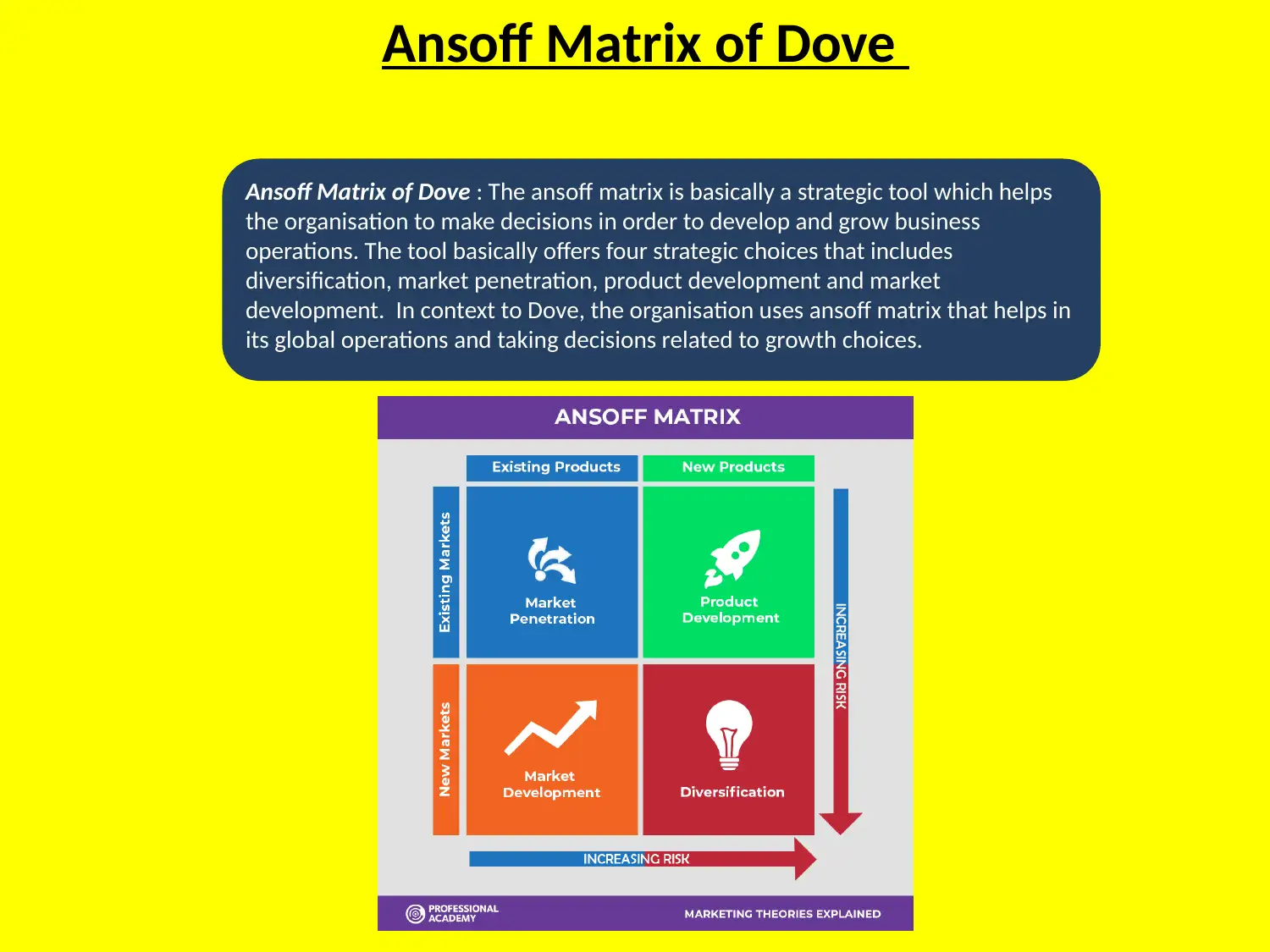
Ansoff Matrix of Dove
Ansoff Matrix of Dove : The ansoff matrix is basically a strategic tool which helps
the organisation to make decisions in order to develop and grow business
operations. The tool basically offers four strategic choices that includes
diversification, market penetration, product development and market
development. In context to Dove, the organisation uses ansoff matrix that helps in
its global operations and taking decisions related to growth choices.
Ansoff Matrix of Dove : The ansoff matrix is basically a strategic tool which helps
the organisation to make decisions in order to develop and grow business
operations. The tool basically offers four strategic choices that includes
diversification, market penetration, product development and market
development. In context to Dove, the organisation uses ansoff matrix that helps in
its global operations and taking decisions related to growth choices.
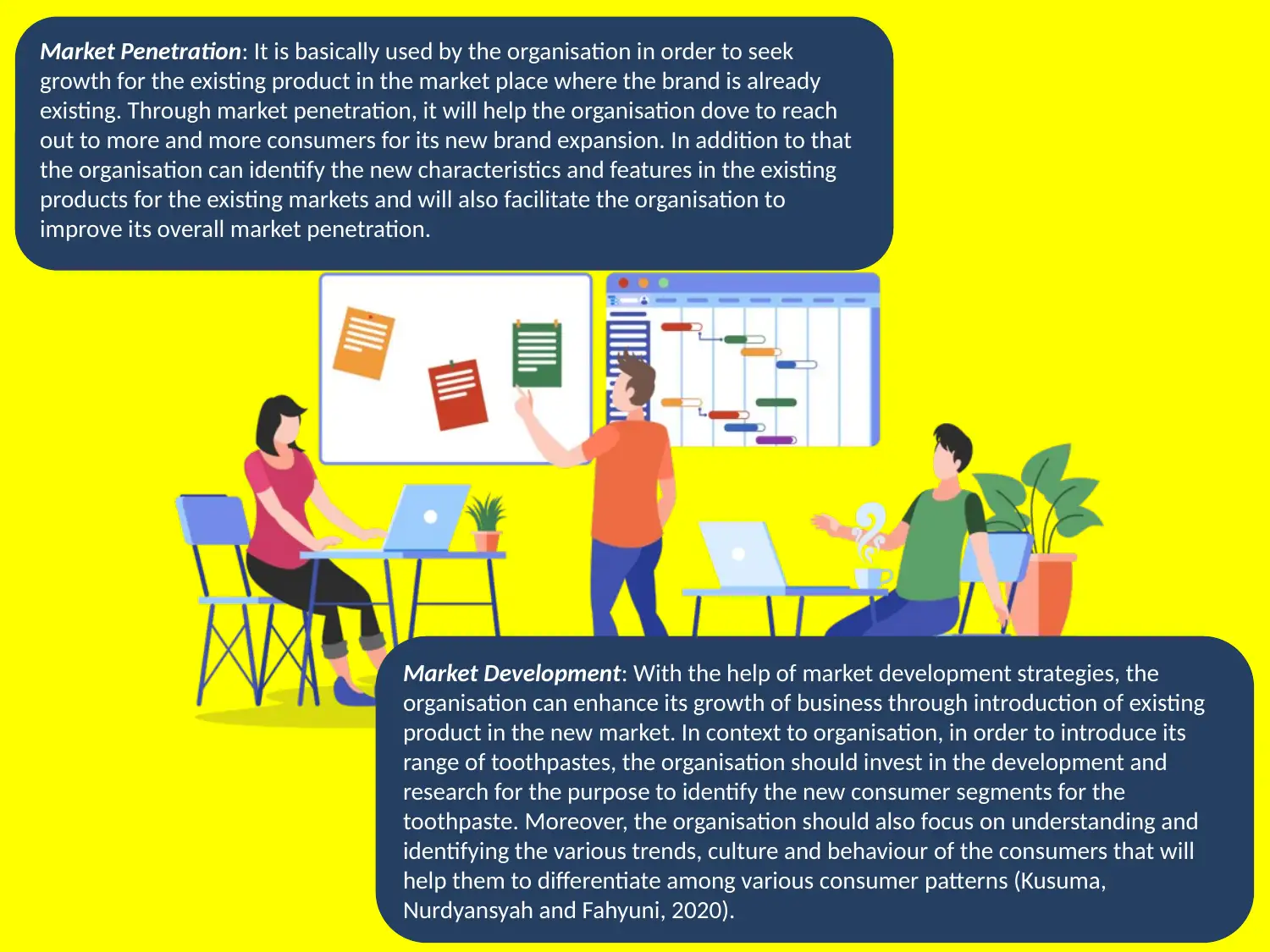
Market Penetration: It is basically used by the organisation in order to seek
growth for the existing product in the market place where the brand is already
existing. Through market penetration, it will help the organisation dove to reach
out to more and more consumers for its new brand expansion. In addition to that
the organisation can identify the new characteristics and features in the existing
products for the existing markets and will also facilitate the organisation to
improve its overall market penetration.
Market Development: With the help of market development strategies, the
organisation can enhance its growth of business through introduction of existing
product in the new market. In context to organisation, in order to introduce its
range of toothpastes, the organisation should invest in the development and
research for the purpose to identify the new consumer segments for the
toothpaste. Moreover, the organisation should also focus on understanding and
identifying the various trends, culture and behaviour of the consumers that will
help them to differentiate among various consumer patterns (Kusuma,
Nurdyansyah and Fahyuni, 2020).
growth for the existing product in the market place where the brand is already
existing. Through market penetration, it will help the organisation dove to reach
out to more and more consumers for its new brand expansion. In addition to that
the organisation can identify the new characteristics and features in the existing
products for the existing markets and will also facilitate the organisation to
improve its overall market penetration.
Market Development: With the help of market development strategies, the
organisation can enhance its growth of business through introduction of existing
product in the new market. In context to organisation, in order to introduce its
range of toothpastes, the organisation should invest in the development and
research for the purpose to identify the new consumer segments for the
toothpaste. Moreover, the organisation should also focus on understanding and
identifying the various trends, culture and behaviour of the consumers that will
help them to differentiate among various consumer patterns (Kusuma,
Nurdyansyah and Fahyuni, 2020).
⊘ This is a preview!⊘
Do you want full access?
Subscribe today to unlock all pages.

Trusted by 1+ million students worldwide
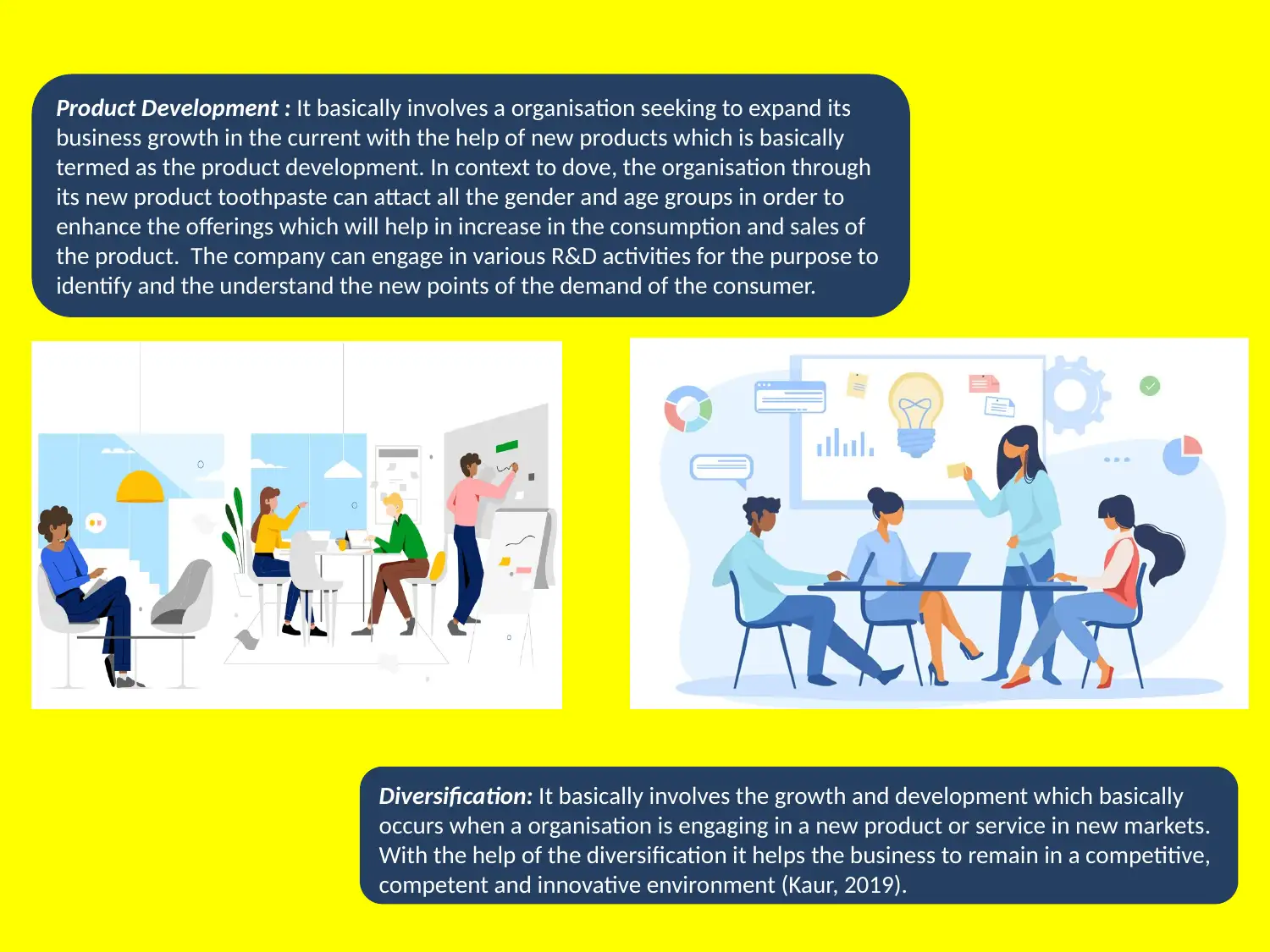
Product Development : It basically involves a organisation seeking to expand its
business growth in the current with the help of new products which is basically
termed as the product development. In context to dove, the organisation through
its new product toothpaste can attact all the gender and age groups in order to
enhance the offerings which will help in increase in the consumption and sales of
the product. The company can engage in various R&D activities for the purpose to
identify and the understand the new points of the demand of the consumer.
Diversification: It basically involves the growth and development which basically
occurs when a organisation is engaging in a new product or service in new markets.
With the help of the diversification it helps the business to remain in a competitive,
competent and innovative environment (Kaur, 2019).
business growth in the current with the help of new products which is basically
termed as the product development. In context to dove, the organisation through
its new product toothpaste can attact all the gender and age groups in order to
enhance the offerings which will help in increase in the consumption and sales of
the product. The company can engage in various R&D activities for the purpose to
identify and the understand the new points of the demand of the consumer.
Diversification: It basically involves the growth and development which basically
occurs when a organisation is engaging in a new product or service in new markets.
With the help of the diversification it helps the business to remain in a competitive,
competent and innovative environment (Kaur, 2019).
Paraphrase This Document
Need a fresh take? Get an instant paraphrase of this document with our AI Paraphraser
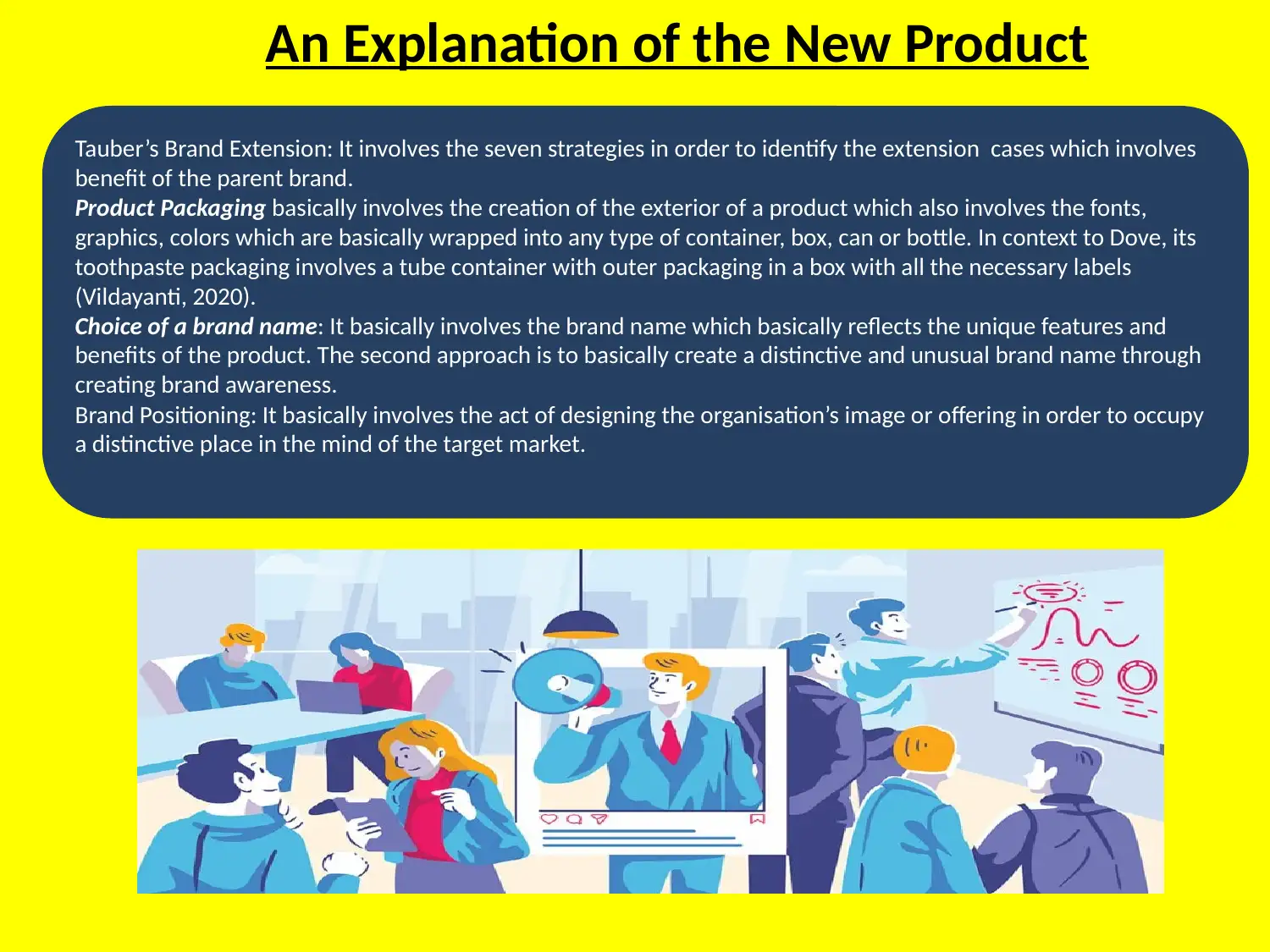
An Explanation of the New Product
Tauber’s Brand Extension: It involves the seven strategies in order to identify the extension cases which involves
benefit of the parent brand.
Product Packaging basically involves the creation of the exterior of a product which also involves the fonts,
graphics, colors which are basically wrapped into any type of container, box, can or bottle. In context to Dove, its
toothpaste packaging involves a tube container with outer packaging in a box with all the necessary labels
(Vildayanti, 2020).
Choice of a brand name: It basically involves the brand name which basically reflects the unique features and
benefits of the product. The second approach is to basically create a distinctive and unusual brand name through
creating brand awareness.
Brand Positioning: It basically involves the act of designing the organisation’s image or offering in order to occupy
a distinctive place in the mind of the target market.
Tauber’s Brand Extension: It involves the seven strategies in order to identify the extension cases which involves
benefit of the parent brand.
Product Packaging basically involves the creation of the exterior of a product which also involves the fonts,
graphics, colors which are basically wrapped into any type of container, box, can or bottle. In context to Dove, its
toothpaste packaging involves a tube container with outer packaging in a box with all the necessary labels
(Vildayanti, 2020).
Choice of a brand name: It basically involves the brand name which basically reflects the unique features and
benefits of the product. The second approach is to basically create a distinctive and unusual brand name through
creating brand awareness.
Brand Positioning: It basically involves the act of designing the organisation’s image or offering in order to occupy
a distinctive place in the mind of the target market.
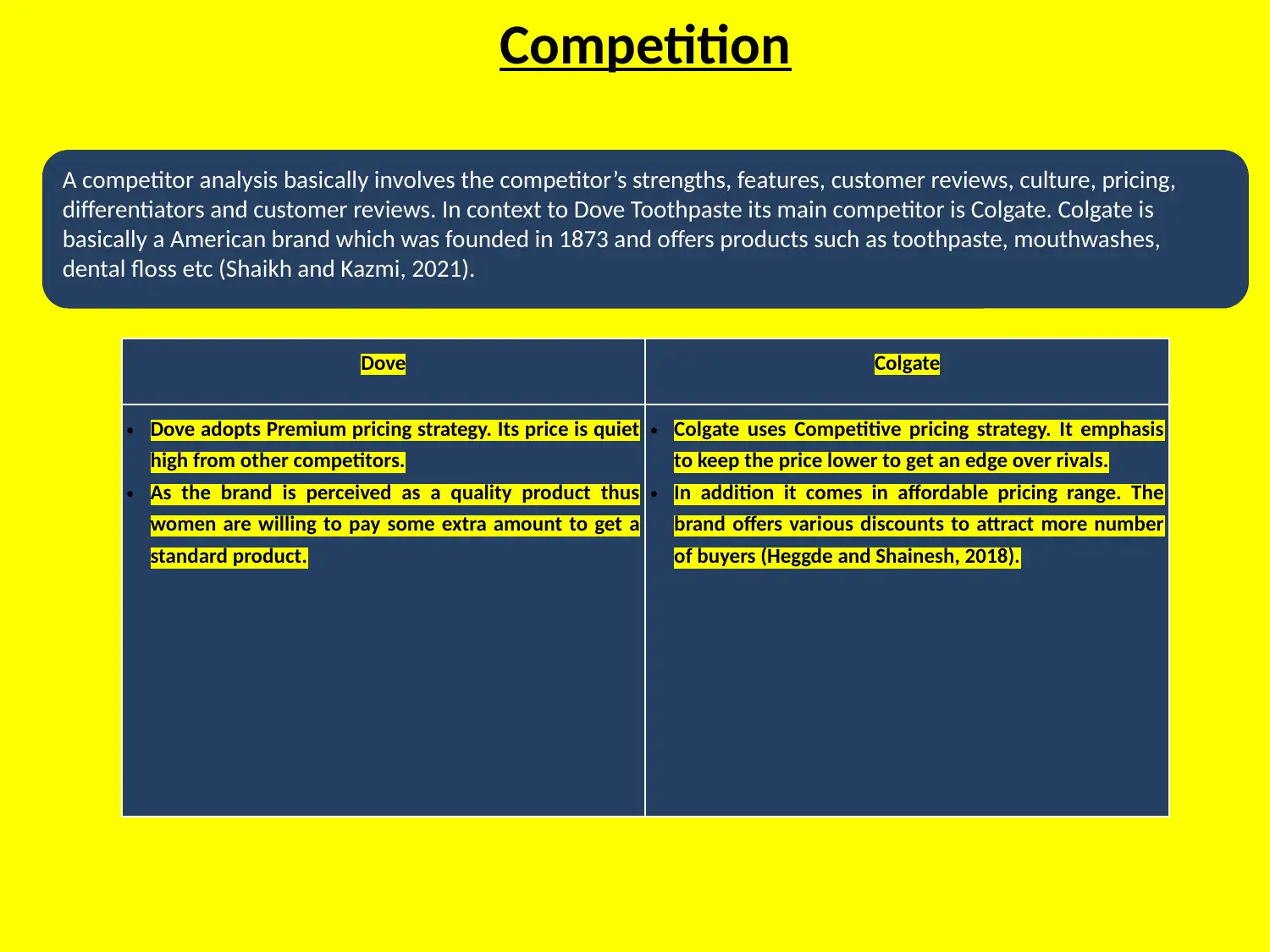
Competition
A competitor analysis basically involves the competitor’s strengths, features, customer reviews, culture, pricing,
differentiators and customer reviews. In context to Dove Toothpaste its main competitor is Colgate. Colgate is
basically a American brand which was founded in 1873 and offers products such as toothpaste, mouthwashes,
dental floss etc (Shaikh and Kazmi, 2021).
Dove Colgate
• Dove adopts Premium pricing strategy. Its price is quiet
high from other competitors.
• As the brand is perceived as a quality product thus
women are willing to pay some extra amount to get a
standard product.
• Colgate uses Competitive pricing strategy. It emphasis
to keep the price lower to get an edge over rivals.
• In addition it comes in affordable pricing range. The
brand offers various discounts to attract more number
of buyers (Heggde and Shainesh, 2018).
A competitor analysis basically involves the competitor’s strengths, features, customer reviews, culture, pricing,
differentiators and customer reviews. In context to Dove Toothpaste its main competitor is Colgate. Colgate is
basically a American brand which was founded in 1873 and offers products such as toothpaste, mouthwashes,
dental floss etc (Shaikh and Kazmi, 2021).
Dove Colgate
• Dove adopts Premium pricing strategy. Its price is quiet
high from other competitors.
• As the brand is perceived as a quality product thus
women are willing to pay some extra amount to get a
standard product.
• Colgate uses Competitive pricing strategy. It emphasis
to keep the price lower to get an edge over rivals.
• In addition it comes in affordable pricing range. The
brand offers various discounts to attract more number
of buyers (Heggde and Shainesh, 2018).
⊘ This is a preview!⊘
Do you want full access?
Subscribe today to unlock all pages.

Trusted by 1+ million students worldwide
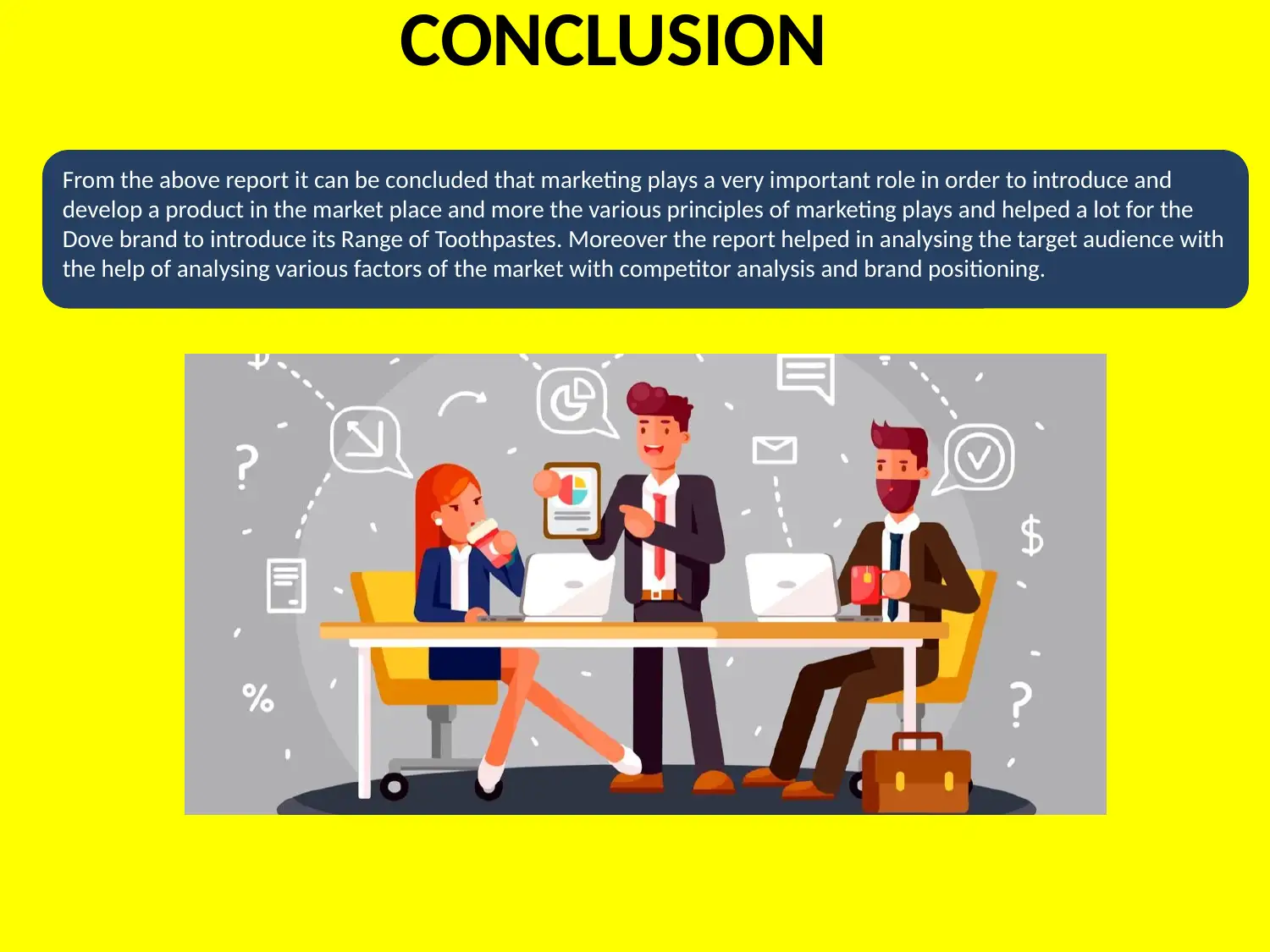
CONCLUSION
From the above report it can be concluded that marketing plays a very important role in order to introduce and
develop a product in the market place and more the various principles of marketing plays and helped a lot for the
Dove brand to introduce its Range of Toothpastes. Moreover the report helped in analysing the target audience with
the help of analysing various factors of the market with competitor analysis and brand positioning.
From the above report it can be concluded that marketing plays a very important role in order to introduce and
develop a product in the market place and more the various principles of marketing plays and helped a lot for the
Dove brand to introduce its Range of Toothpastes. Moreover the report helped in analysing the target audience with
the help of analysing various factors of the market with competitor analysis and brand positioning.
Paraphrase This Document
Need a fresh take? Get an instant paraphrase of this document with our AI Paraphraser
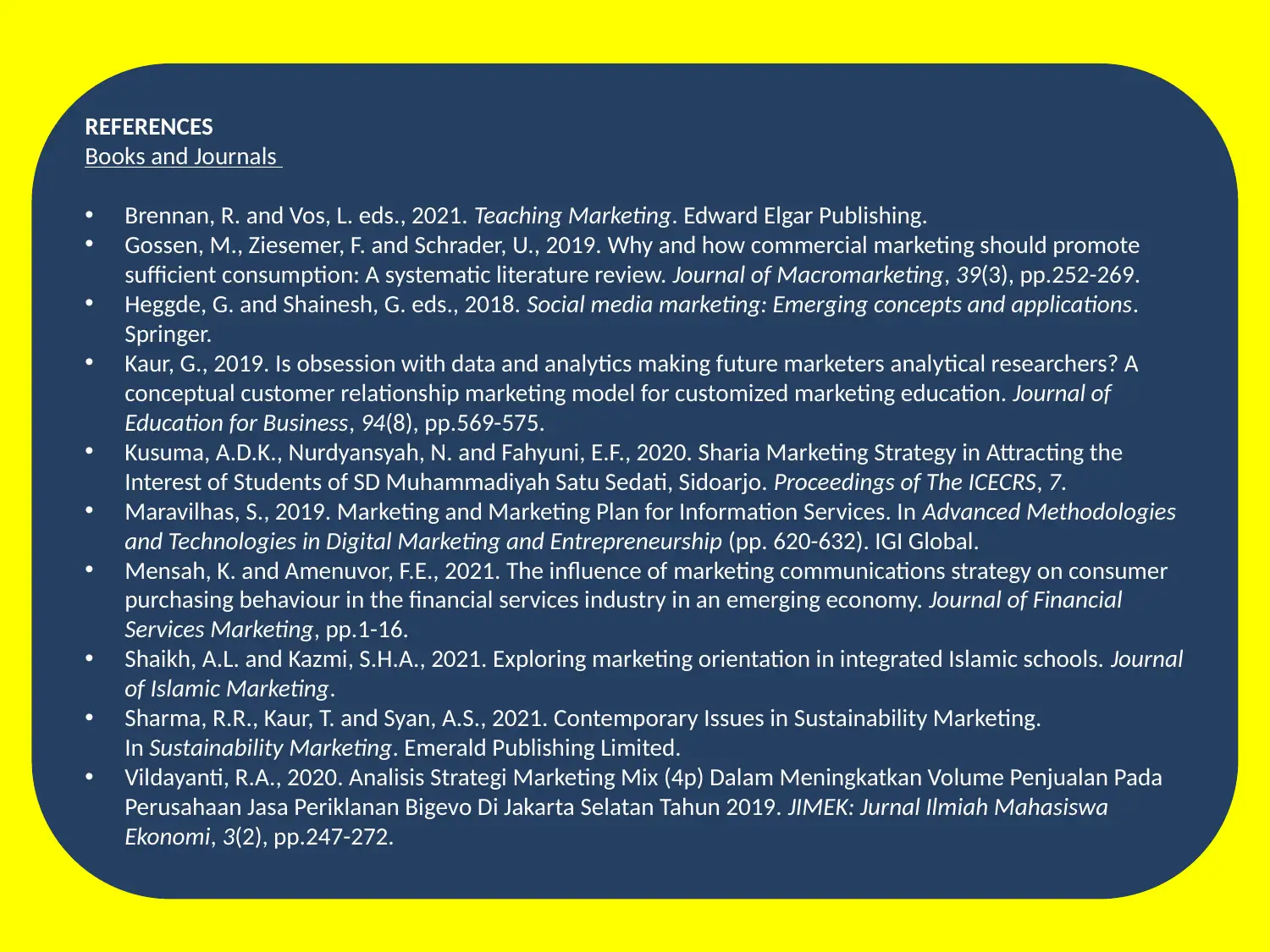
REFERENCES
Books and Journals
• Brennan, R. and Vos, L. eds., 2021. Teaching Marketing. Edward Elgar Publishing.
• Gossen, M., Ziesemer, F. and Schrader, U., 2019. Why and how commercial marketing should promote
sufficient consumption: A systematic literature review. Journal of Macromarketing, 39(3), pp.252-269.
• Heggde, G. and Shainesh, G. eds., 2018. Social media marketing: Emerging concepts and applications.
Springer.
• Kaur, G., 2019. Is obsession with data and analytics making future marketers analytical researchers? A
conceptual customer relationship marketing model for customized marketing education. Journal of
Education for Business, 94(8), pp.569-575.
• Kusuma, A.D.K., Nurdyansyah, N. and Fahyuni, E.F., 2020. Sharia Marketing Strategy in Attracting the
Interest of Students of SD Muhammadiyah Satu Sedati, Sidoarjo. Proceedings of The ICECRS, 7.
• Maravilhas, S., 2019. Marketing and Marketing Plan for Information Services. In Advanced Methodologies
and Technologies in Digital Marketing and Entrepreneurship (pp. 620-632). IGI Global.
• Mensah, K. and Amenuvor, F.E., 2021. The influence of marketing communications strategy on consumer
purchasing behaviour in the financial services industry in an emerging economy. Journal of Financial
Services Marketing, pp.1-16.
• Shaikh, A.L. and Kazmi, S.H.A., 2021. Exploring marketing orientation in integrated Islamic schools. Journal
of Islamic Marketing.
• Sharma, R.R., Kaur, T. and Syan, A.S., 2021. Contemporary Issues in Sustainability Marketing.
In Sustainability Marketing. Emerald Publishing Limited.
• Vildayanti, R.A., 2020. Analisis Strategi Marketing Mix (4p) Dalam Meningkatkan Volume Penjualan Pada
Perusahaan Jasa Periklanan Bigevo Di Jakarta Selatan Tahun 2019. JIMEK: Jurnal Ilmiah Mahasiswa
Ekonomi, 3(2), pp.247-272.
Books and Journals
• Brennan, R. and Vos, L. eds., 2021. Teaching Marketing. Edward Elgar Publishing.
• Gossen, M., Ziesemer, F. and Schrader, U., 2019. Why and how commercial marketing should promote
sufficient consumption: A systematic literature review. Journal of Macromarketing, 39(3), pp.252-269.
• Heggde, G. and Shainesh, G. eds., 2018. Social media marketing: Emerging concepts and applications.
Springer.
• Kaur, G., 2019. Is obsession with data and analytics making future marketers analytical researchers? A
conceptual customer relationship marketing model for customized marketing education. Journal of
Education for Business, 94(8), pp.569-575.
• Kusuma, A.D.K., Nurdyansyah, N. and Fahyuni, E.F., 2020. Sharia Marketing Strategy in Attracting the
Interest of Students of SD Muhammadiyah Satu Sedati, Sidoarjo. Proceedings of The ICECRS, 7.
• Maravilhas, S., 2019. Marketing and Marketing Plan for Information Services. In Advanced Methodologies
and Technologies in Digital Marketing and Entrepreneurship (pp. 620-632). IGI Global.
• Mensah, K. and Amenuvor, F.E., 2021. The influence of marketing communications strategy on consumer
purchasing behaviour in the financial services industry in an emerging economy. Journal of Financial
Services Marketing, pp.1-16.
• Shaikh, A.L. and Kazmi, S.H.A., 2021. Exploring marketing orientation in integrated Islamic schools. Journal
of Islamic Marketing.
• Sharma, R.R., Kaur, T. and Syan, A.S., 2021. Contemporary Issues in Sustainability Marketing.
In Sustainability Marketing. Emerald Publishing Limited.
• Vildayanti, R.A., 2020. Analisis Strategi Marketing Mix (4p) Dalam Meningkatkan Volume Penjualan Pada
Perusahaan Jasa Periklanan Bigevo Di Jakarta Selatan Tahun 2019. JIMEK: Jurnal Ilmiah Mahasiswa
Ekonomi, 3(2), pp.247-272.
1 out of 11
Related Documents
Your All-in-One AI-Powered Toolkit for Academic Success.
+13062052269
info@desklib.com
Available 24*7 on WhatsApp / Email
![[object Object]](/_next/static/media/star-bottom.7253800d.svg)
Unlock your academic potential
Copyright © 2020–2025 A2Z Services. All Rights Reserved. Developed and managed by ZUCOL.



